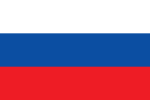Evangelical Lyceum
1606 establishments in EuropeChristian schools in SlovakiaEducation in BratislavaEuropean school stubsSlovak building and structure stubs
Evangelic Lutheran Lyceum (Evanjelické lyceum) in Bratislava, Slovakia, was founded in 1606 by David Kilger as a Lutheran high school. Until 1656 was Evangelical Lyceum a school with eight classes, two of them elementary school. Among its students, from 1829 to 1836, was the young Ľudovít Štúr, who became a member of Czech-Slav Society at the school, an important influence on his life as a Slovak nationalist. Between 1923 and 1989 the school was closed, but it was reopened in 1991 as a bilingual school, and continues to operate today.
Excerpt from the Wikipedia article Evangelical Lyceum (License: CC BY-SA 3.0, Authors).Evangelical Lyceum
Kremnická, Bratislava Dvory (District of Bratislava V)
Geographical coordinates (GPS) Address Website External links Nearby Places Show on map
Geographical coordinates (GPS)
| Latitude | Longitude |
|---|---|
| N 48.1247592 ° | E 17.0910425 ° |
Address
Evanjelické lýceum
Kremnická
851 01 Bratislava, Dvory (District of Bratislava V)
Region of Bratislava, Slovakia
Open on Google Maps










